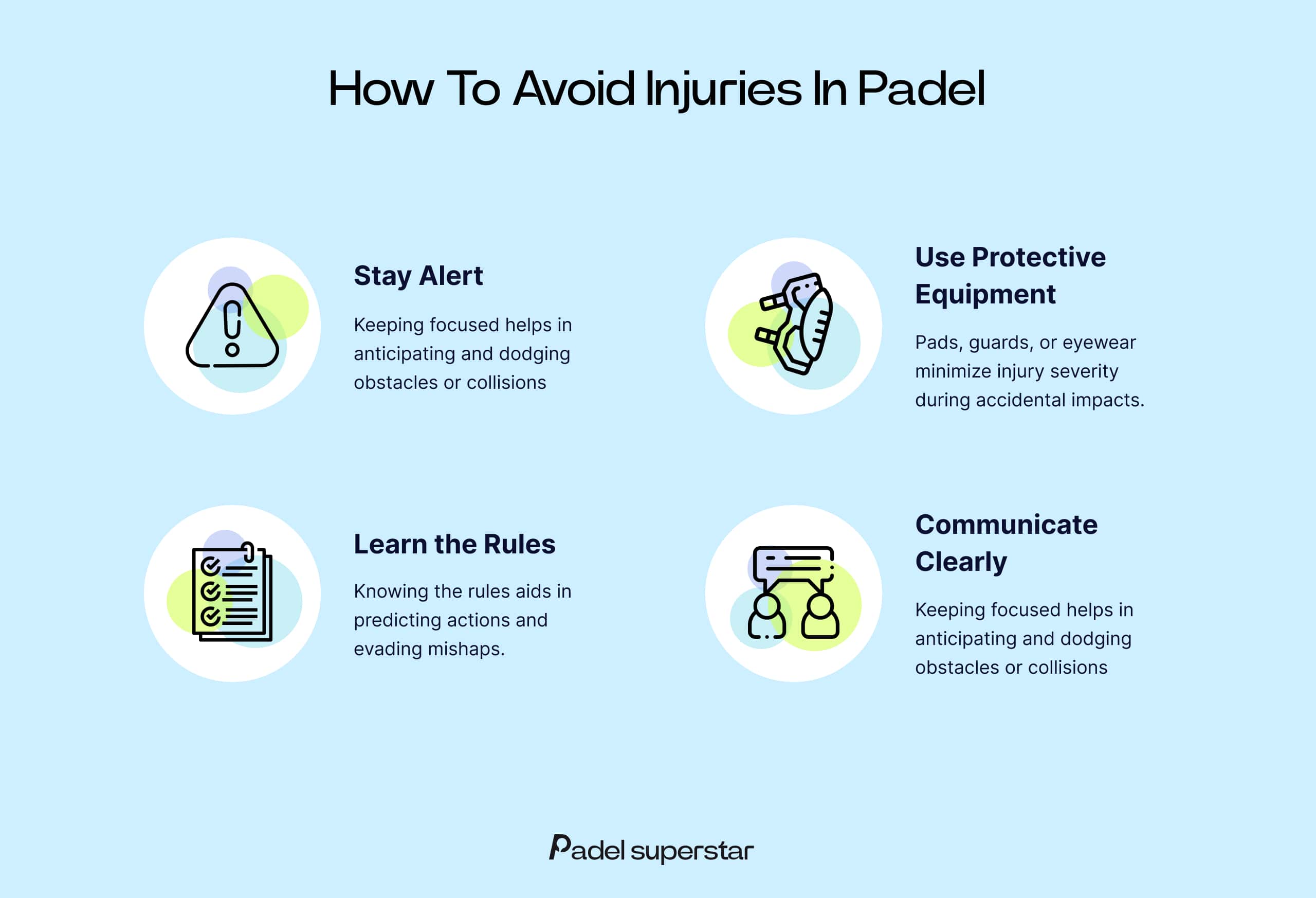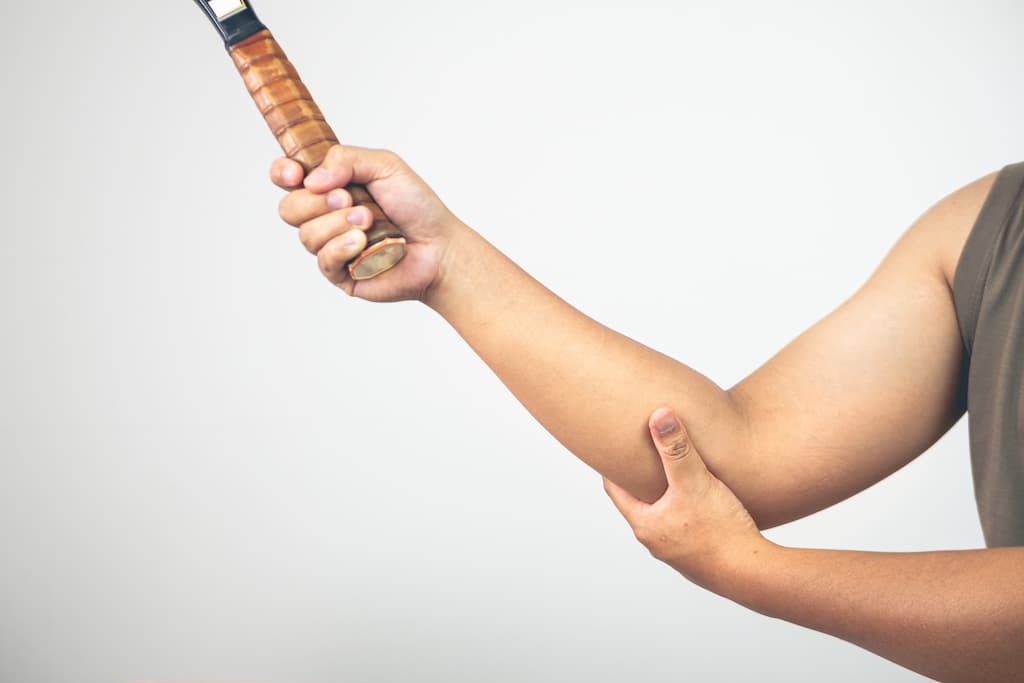Padel, a racquet sport that originated in Mexico, has gained immense popularity in recent years. It is a fun and exciting game that can be played by people of all ages and skill levels. However, like any other sport, Padel comes with its fair share of risks, including the risk of injuries.
Injuries are an unfortunate part of any sport, and Padel is no exception. Padel injuries can range from minor sprains and strains to more serious injuries like fractures and dislocations. While some injuries are unavoidable, steps like getting appropriate footwear and adopting supportive knee guards can play a significant role in minimizing injury risks.
Key Takeaways
- Padel is a popular racquet sport that comes with the risk of injuries.
- Injuries in Padel can range from minor sprains to more serious fractures and dislocations.
- Players can take steps to minimize their risk of getting injured while playing Padel.
Causes of Padel Injuries
Padel, often played on a specialized Padel court, is a dynamic sport characterized by intense movement, quick changes of direction, and explosive actions. Given these dynamics, the occurrence of a sports injury isn’t uncommon. In this section, we dissect the intricate scenarios leading to a Padel injury and enumerate preventive measures to ensure players’ safety and optimal performance.
Technique
A pivotal precursor to a sports injury, particularly a Padel injury, is poor technique. Inadequate or incorrect technique amplifies pressure on specific body parts, potentially leading to injuries. A player overly reliant on the wrist for shots might encounter the dreaded tennis elbow. Excessive pressure on the knees during rapid directional shifts can escalate into patellar tendinitis.
Pressure
Padel’s competitive essence, accentuated on the Padel court, sometimes morphs into a pressure cooker. Players, especially novices, grapple with the sport’s physical demands, occasionally pushing their limits, and plunging into the murky waters of overuse sports injuries.
Twisting
The Padel court is a theatre of swift, unpredictable motions. Players, in their quest to reach an elusive ball or pivot direction, often engage in abrupt twisting. This action, though seemingly innocuous, is a common harbinger of strains and sprains, notably afflicting the lower back and hips.
Changes of Direction
Padel’s hallmark is its rapid, abrupt directional changes, a spectacle on the Padel court but a potential strain source. These motions, especially for the uninitiated, exert significant stress on the knees and ankles, elevating the Padel injury risk.
Posture
The overlooked yet crucial aspect contributing to a sports injury is posture. In the heat of the game on the Padel court, players with compromised posture exacerbate pressure on particular body segments. A player’s hunch, for instance, is often a prelude to back or shoulder pain.
How to Avoid Injuries in Padel
Padel is a fast-paced racquet sport, requiring agility and intense physical effort. Just like in any other sport, there’s a risk of sustaining a sports injury, making preventive measures and sports medicine pivotal. Here’s how to safeguard yourself on the Padel court, ensuring that the game remains an exhilarating experience.
How to Avoid Accidental Padel Injuries
Accidental injuries in Padel can result from player collisions or impacts with balls and walls, leading to bruises, sprains, or fractures. Wearing protective equipment is essential to mitigate the impact severity.
Tips on How to Prevent These Injuries
- Stay Alert: Keeping focused helps in anticipating and dodging obstacles or collisions.
- Communicate Clearly: Loud and clear verbal signals coordinate movements with partners.
- Use Protective Equipment: Pads, guards, or eyewear minimize injury severity during accidental impacts.
- Learn the Rules: Knowing the rules aids in predicting actions and evading mishaps.

How to Avoid Excessive Padel Injuries
Excessive injuries arise from overexertion or extended play. Muscular and strains joint injuries are common, particularly among players who push their body’s limits.
Tips on How to Prevent These Injuries
- Schedule Breaks: Allocate time for rest and recuperation.
- Monitor Intensity: Assess your physical exertion, easing up when necessary.
- Know Your Limits: Heed your body’s warnings and pause at signs of excessive strain.
- Regular Health Check-ups: Early identification and management of health concerns.
How to Avoid Poor Technique-Related Injuries
Poor technique can lead to strains and joint injuries, resulting from incorrect postures or unpolished skills. These issues can cause specific injury locations to be more susceptible.
Tips on How to Prevent These Injuries
- Take Lessons: Sports medicine experts can help refine your techniques.
- Watch & Learn: Analyze techniques of professional players for improvement.
- Feedback & Correction: Peer feedback aids in pinpointing and amending errors.
- Consistent Practice: Hone skills and techniques with regular play.
How to Avoid Bad Diet-Related Injuries
Nutrition plays a pivotal role. A bad diet can exacerbate the risk of sports injuries, impacting different muscle groups and overall performance.
Tips on How to Prevent These Injuries
- Balanced Diet: Diversify food intake for a comprehensive nutrient supply.
- Hydration: Ample fluid intake sustains bodily functions and energy.
- Avoid Processed Foods: Minimize consumption of unhealthy options.
- Nutrition Advice: Tailored plans from experts optimize diet for activity levels.
How to Avoid Padel Injuries from Not Warming Up
Inadequate warm-up leads to stiff muscles and unprepared joints, amplifying the risk of sports injuries. Young athletes, in particular, should be mindful of warming up properly.
Tips on How to Prevent These Injuries
- Dynamic Warm-Up: Incorporating stretching exercises and light cardiovascular exercises prepares the body.
- Sport-Specific Exercises: Mimic Padel movements to prime different muscle groups.
- Adequate Duration: Allocate sufficient time for warming up.
- Cool Down: Eases muscle tension and prepares the body for rest.
Most Common Injuries in Padel
Padel, characterized by its rapid pace and intense action, is a sport where common sports injuries like strains and sprains are prevalent. In the heat of the game, especially on a fast-paced Padel court, players may experience musculoskeletal sports injuries due to sudden stops, quick movements, and extensive twisting and turning. We delve into the most common sports injuries in this sport, pinpointing their origins and preventive measures for Padel players.
Ankle Injuries
Why They Happen
These are common sports injuries resulting from quick lateral movements or sudden stops. A roll or twist of the ankle on the Padel court can stretch or tear ligaments, leading to strains or joint injuries.
Symptoms
Padel players may experience pain, swelling, and limited mobility, echoing the traits of lower body injuries.
How to Avoid Them
Prevention includes exercises to fortify ankle strength, appropriate footwear for grip and support, and a meticulous warm-up routine before stepping onto the Padel court.
Shoulder Injuries
Why They Happen
Overhead movements in Padel, reminiscent of tennis injuries, can strain the shoulder. Overuse or acute trauma often leads to these musculoskeletal sports injuries.
Symptoms
Players may face pain, stiffness, and reduced arm mobility, often exacerbated by poor technique.
How to Avoid Them
Strengthening exercises and proper techniques mitigate the risk, ensuring Padel players can enjoy the game with reduced injury concerns.
Knee Injuries
Why They Happen
Quick directional changes are a staple in Padel, potentially leading to knee strains and joint injuries common in lower body injuries.
Symptoms
These mirror common sports injuries, with swelling and pain as dominant indicators.
How to Avoid Them
Enhancing leg strength and adopting supportive knee guards are prudent for Padel players to minimize injury risks.
Tennis Elbow Injury
Why They Happen
A common Padel injury echoing the realms of tennis injuries, resulting from overuse of the forearm and elbow joint.
Symptoms
Padel players experience pain and stiffness, a classic manifestation of joint and muscular injuries.
How to Avoid Them
Strategies include forearm strengthening and technique refinement, imperative in sidestepping these common sports injuries.
Lower Back Sprain Injury
Why They Happen
Sudden movements or poor posture often culminate in lower back sprains, a familiar narrative in musculoskeletal sports injuries.
Symptoms
Sharp pain and stiffness, indicators of muscular injuries accentuated by dynamic play.
How to Avoid Them
Ergonomic furniture, posture refinement, and core strengthening exercises are paramount.
Calf Sprain Injury
Why They Happen
An explosive dash or abrupt halt can overstretch calf muscles, leading to sprains familiar in exercise common sports injuries.
Symptoms
Padel players are acquainted with sharp pain, swelling, an echoing narrative in lower body injuries.
How to Avoid Them
Preventive measures encompass warm-up routines and calf strengthening, vital in navigating the energetic Padel court.
Runner’s Toe Injury
Why They Happen
Constant forward motion resonates with elbow injuries, where toe pounding against the shoe front is recurrent.
Symptoms
Pain, bruising, a narrative akin to musculoskeletal sports injuries.
How to Avoid Them
Appropriate footwear and refined foot-striking techniques are essential for Padel players.
In conclusion, Padel’s energetic nature, though exhilarating, is a hotbed for various injuries, including those affecting the lower body and joint injuries. Awareness and preventive strategies, from footwear to technique refinement, are Padel players’ arsenal against the tide of common sports injuries. Each stride on the Padel court, armed with this knowledge, transforms into a dance of agility, skill, and safety.
Conclusion
A previous injury can often make players more susceptible to new injuries. Always wear shoes that offer support and grip to prevent slips and falls. Every player, especially young athletes, can steer clear from the common Padel injury by amalgamating awareness, refined techniques, balanced nutrition, and adequate preparation. Embrace these integrated strategies to transform each game into a blend of thrill, skill, and safety, uplifting the entire Padel experience.
Frequently Asked Questions
What is the most common injury in Padel?
The most common injury in Padel often involves the ankle, resulting from sudden twists or turns during play, or collisions with other players. Ankle sprains, characterized by pain, swelling, and limited mobility, are prevalent due to the quick, dynamic movements required in Padel.
Why does my back hurt after Padel?
Back pain after playing Padel can be attributed to several factors. It might be due to poor playing technique, inadequate warm-up, or overexertion during the game. The repetitive and sometimes intense movements can strain the muscles and ligaments in the back, leading to discomfort or pain.
Is Padel bad for knees?
Padel, like any sport that involves quick, dynamic, and repetitive movements, can exert pressure on the knees. However, it isn’t inherently bad for the knees. Injuries or pain often arise from overuse, poor technique, or pre-existing knee conditions. Players with healthy knees who adhere to proper play techniques and preventive measures generally experience minimal issues.
How can you prevent injuries while playing Padel?
Preventing injuries in Padel involves warming up and cooling down to prep and relax the muscles, utilizing proper play techniques to minimize strain, and wearing appropriate gear for support and protection. Players should also be aware of their surroundings to avoid collisions, maintain a balanced diet with adequate hydration for bodily resilience, and rest adequately to recover and maintain overall physical health.

